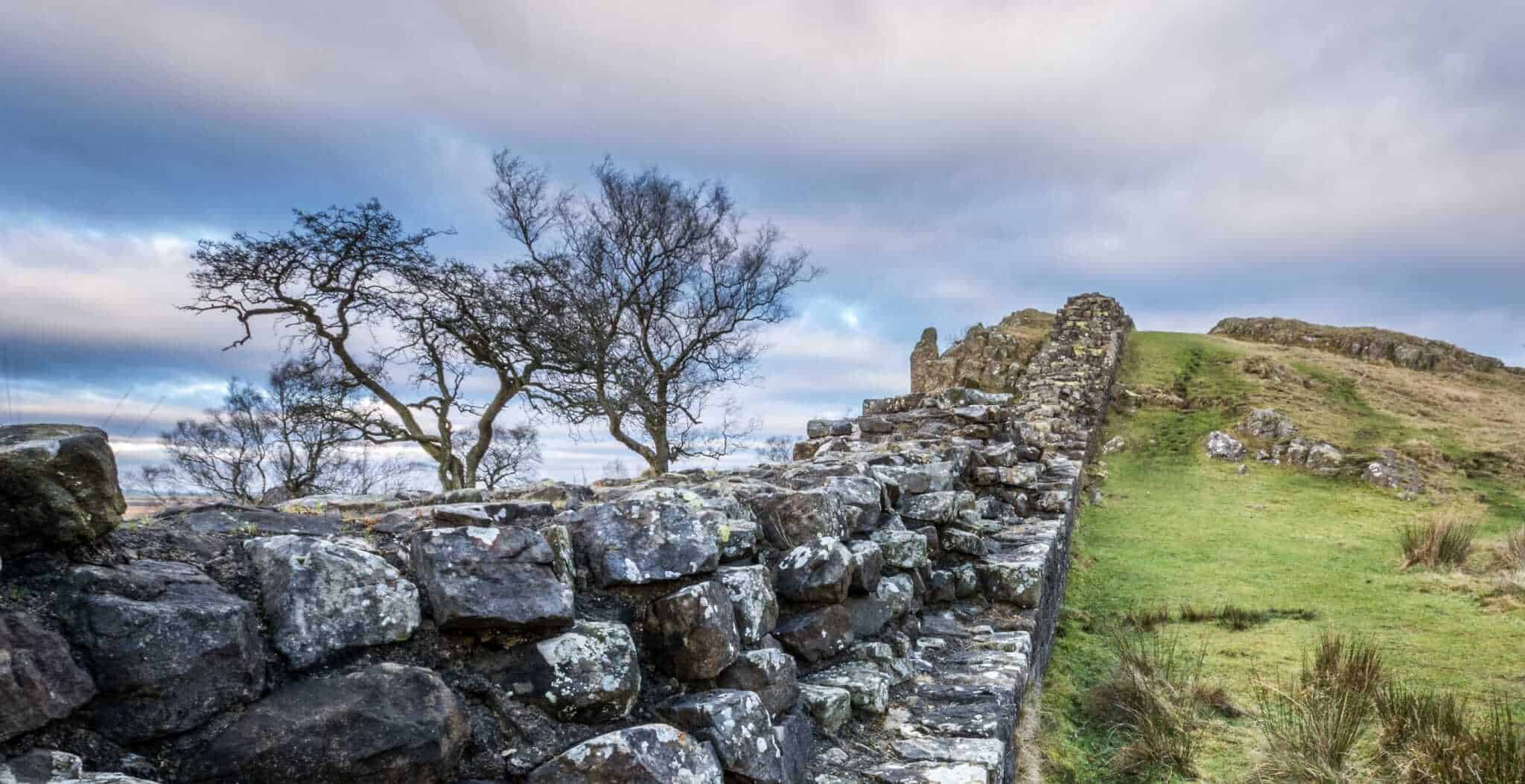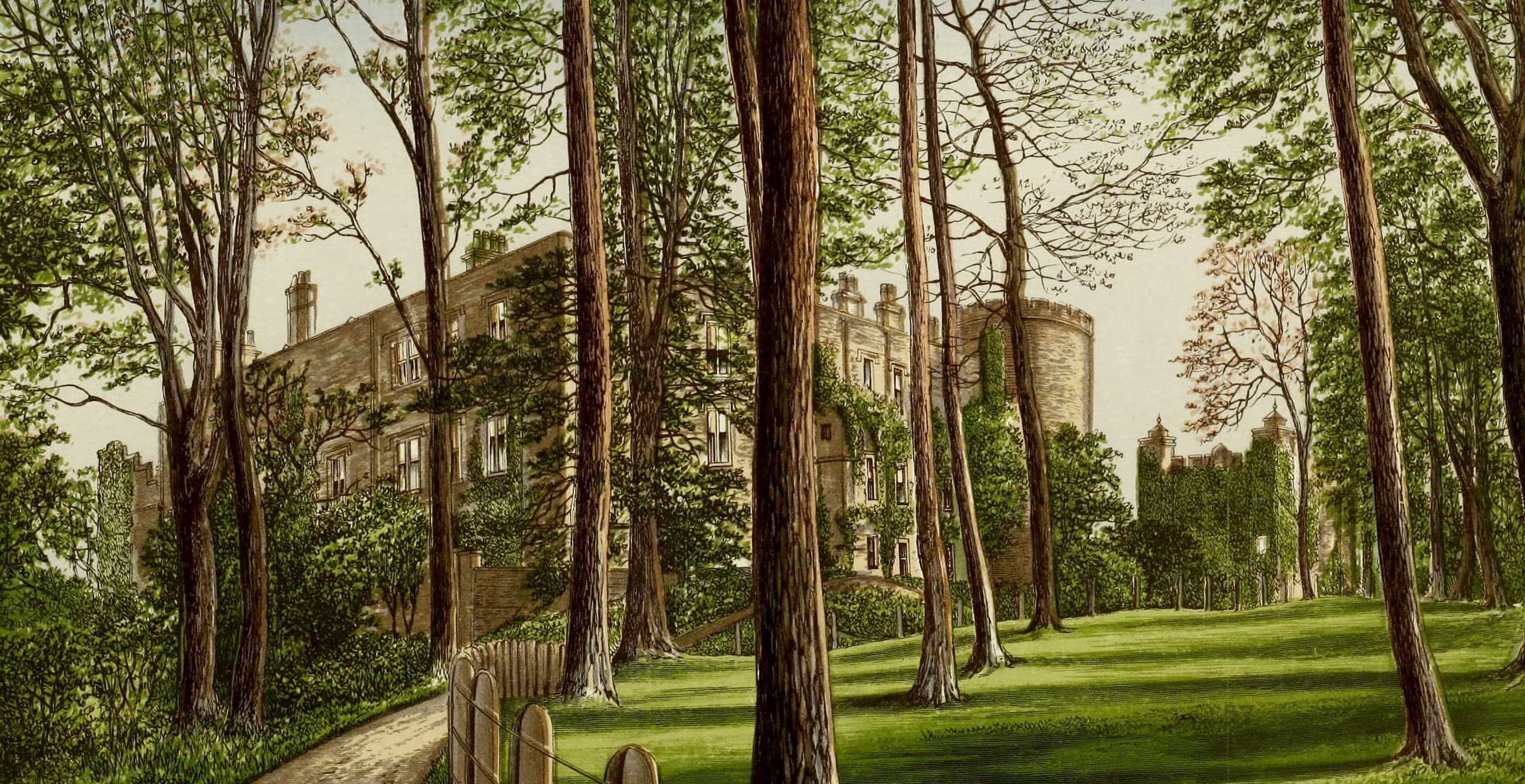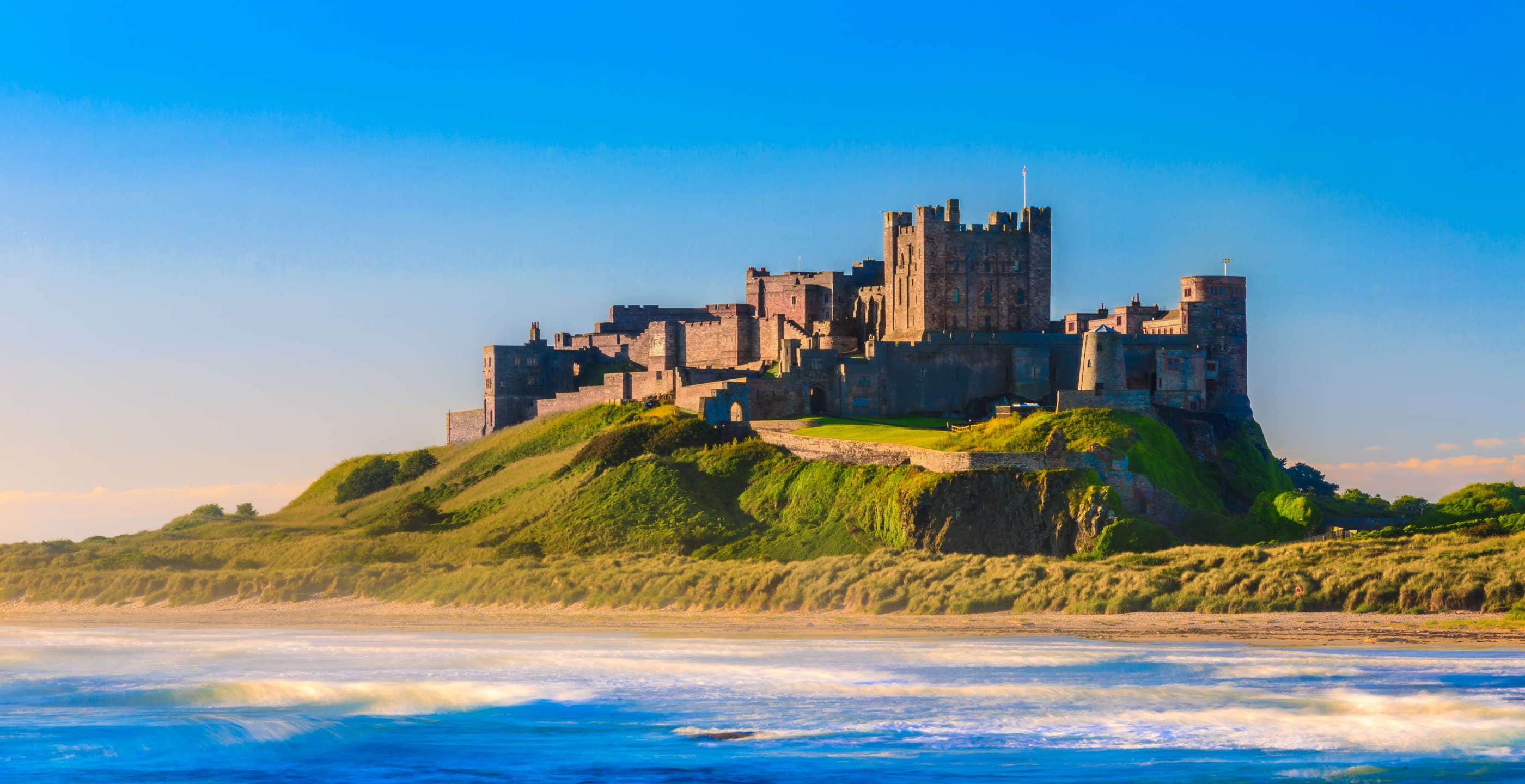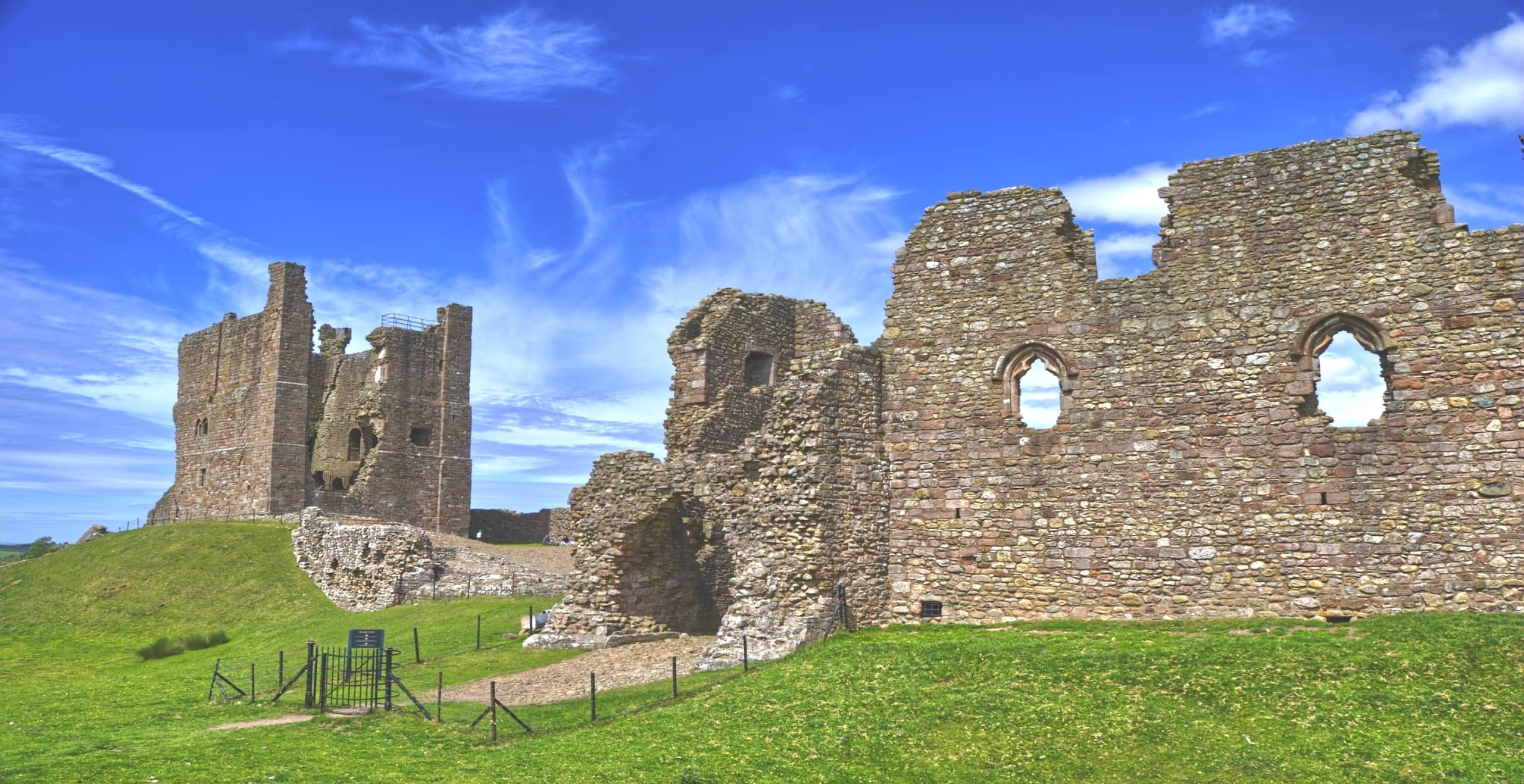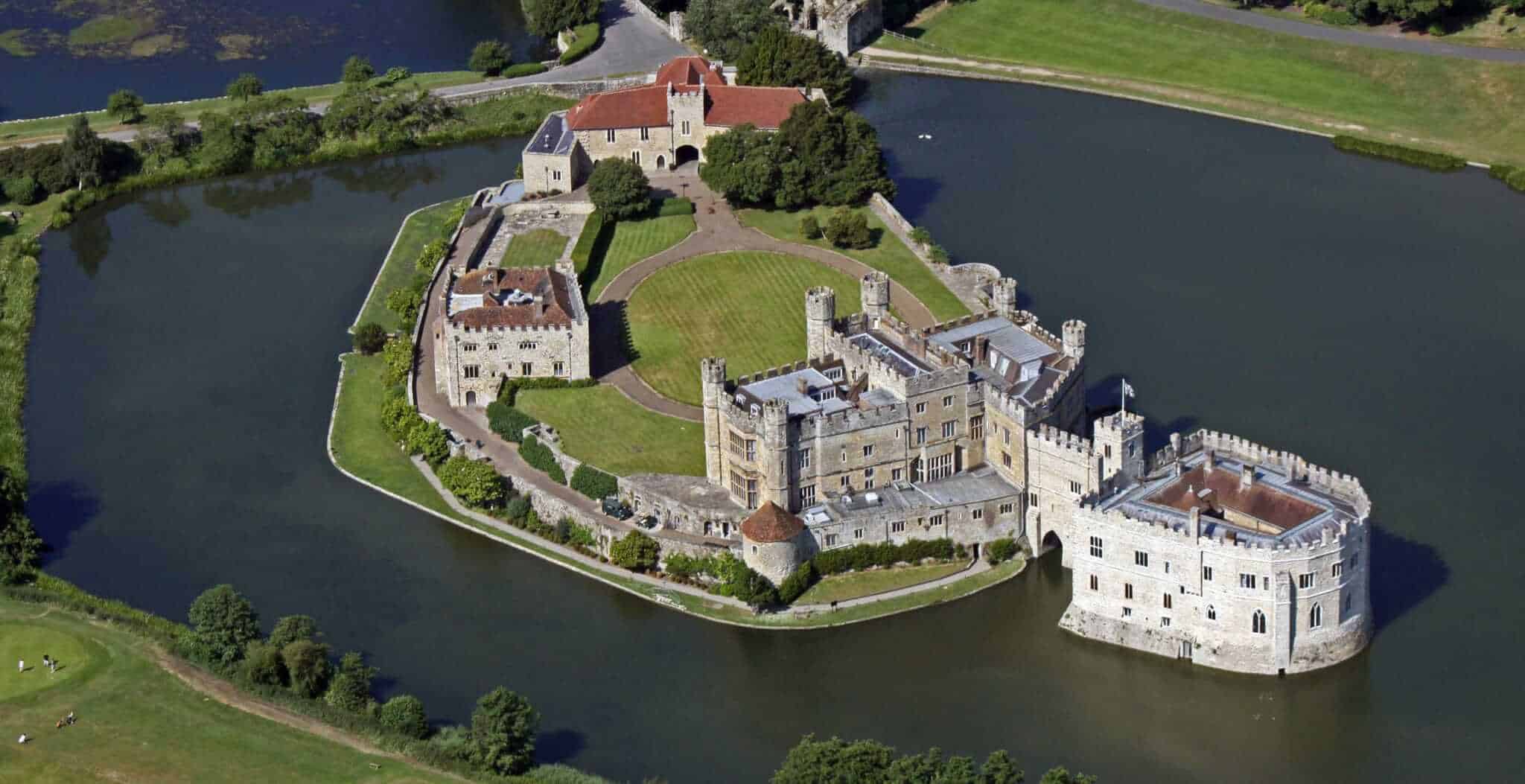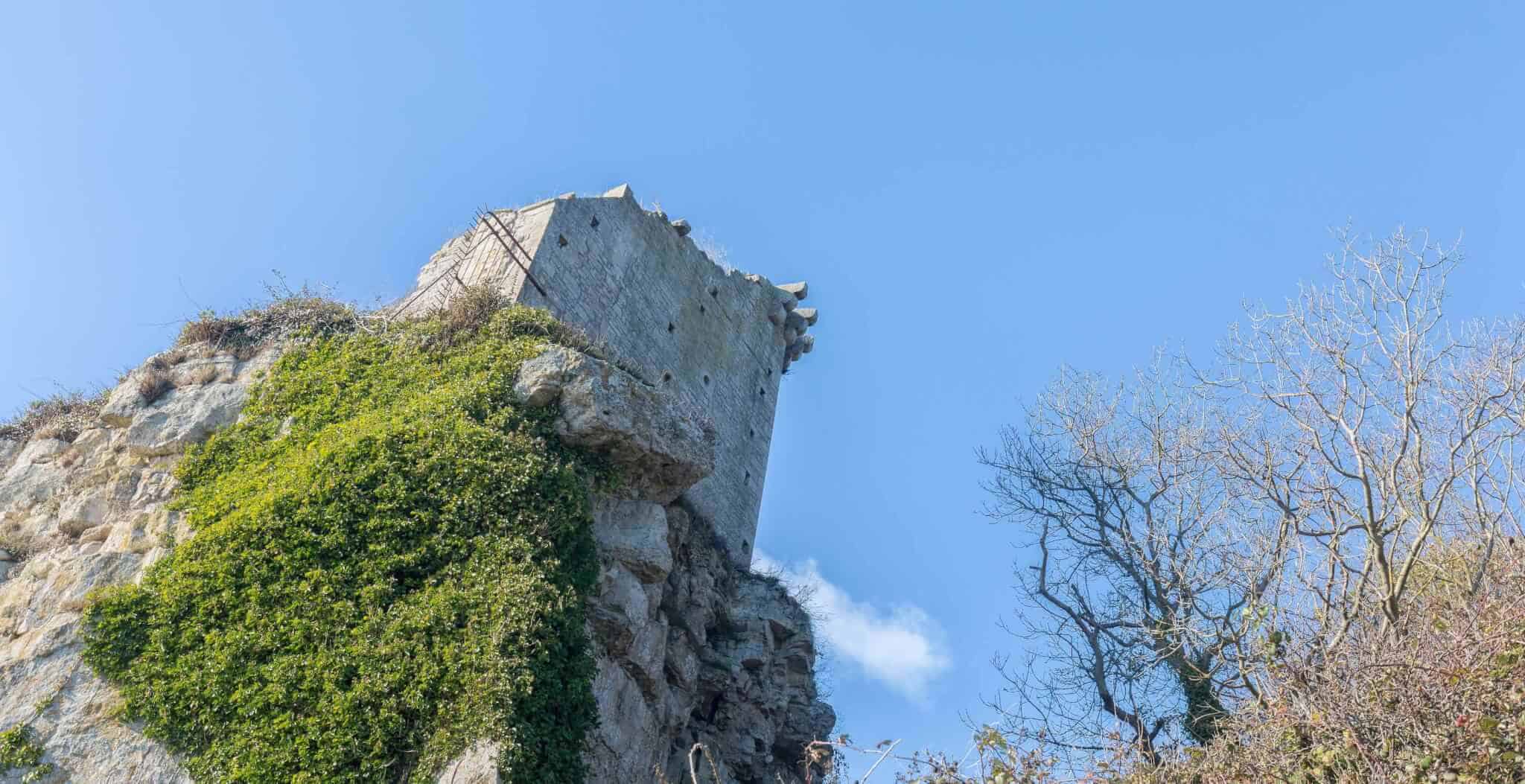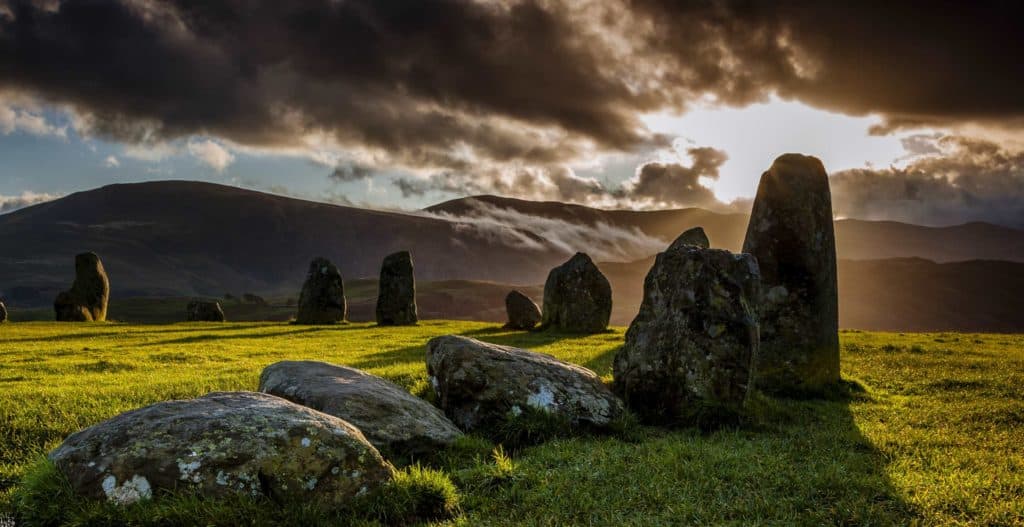Arguably the most peculiar castle remains in England, all that is left to see at Tiermain is a set of earthworks and a solitary corner of the old gatehouse. Rather peculiarly, this tiny piece of gatehouse masonry still stands almost at its original height of over 9 metres!
Not much is known about the origins of the castle, but it is thought that a local lord called Hubert de Vaux built a house on the site sometime in the late 12th century. By the 14th century Hubert’s ancestor, Roland de Vaux, was granted permission to fortify the dwelling. The surviving masonry probably dates from this time.
To add to the novelty factor, Triermain Castle was actually built from Roman stones taken from the nearby Hadrian’s Wall (pictured at the top of this article).
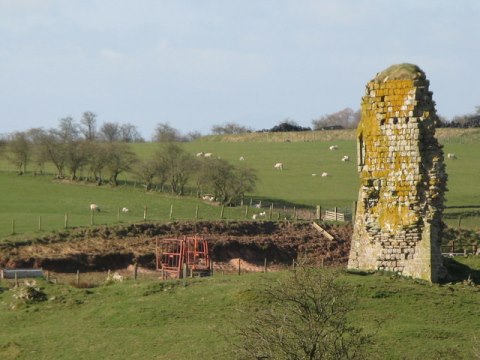
Above: The remains of Triermain Castle. © Copyright Mike Quinn and licensed for reuse under the Creative Commons Licence.
By the late 15th century the castle began to fall into disrepair, with the owner favouring a new castle at Askerton just over three miles away. During the 16th century, local farms starting pillaging the Roman stonework from the ruins, and even to this day many of the nearby farms boast masonry from Hadrian’s Wall.
Along with the gatehouse remains and the earthworks, a small moat can still be seen on the south eastern corner of the castle. Also, if you’re visiting the site, be sure to look closely at the gatehouse remains as it is still possible to make out traces of an old staircase, a window and a door jamb.
Update : For a full list of English castles, be sure to check out our brand new interactive map here.
